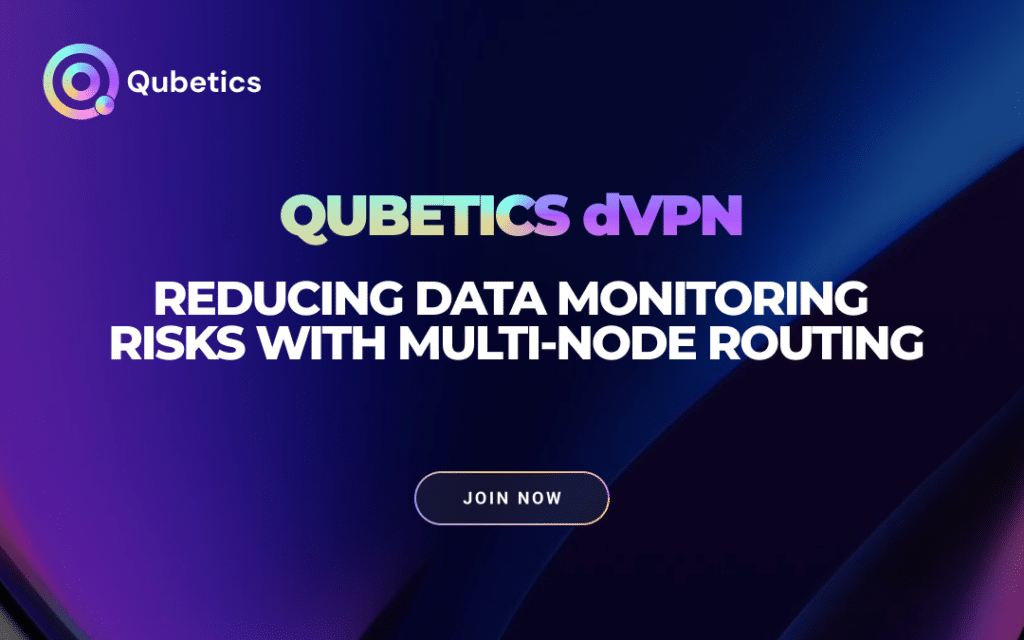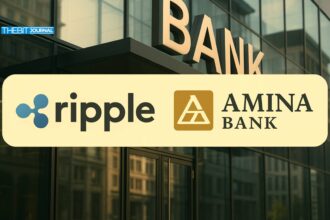If you’re looking for the best altcoins to buy and hold for the short term, you need to know about Qubetics, Arbitrum (ARB), and Tezos (XTZ). While Arbitrum just distributed $120M worth of ARB tokens to DAOs, and Tezos is experiencing a major shift in network activity, it’s Qubetics that’s stealing the show with a massive $12M presale and a projected 22,382% ROI.
With crypto adoption growing, investors are constantly looking for projects that offer real-world utility and massive profit potential. Arbitrum’s airdrop is fueling DAO growth, Tezos is adjusting to Layer 2 expansion, but Qubetics is addressing one of the biggest digital concerns of our time—online privacy. Let’s break down why these three are the best altcoins to buy and hold for short-term gains in 2025.

Qubetics: The AI Crypto Disrupting Online Privacy with Decentralized VPN
Online privacy is a mess right now. Centralized VPNs track user activity, restrict access, and even sell data. Governments impose restrictions, big tech companies control what we see, and hackers exploit vulnerabilities. This is where Qubetics’ decentralized VPN (dVPN) steps in to change the game.
Imagine you’re a business traveler in China who needs access to global news, social media, or private business accounts. A traditional VPN might get blocked, but Qubetics’ dVPN operates through a decentralized, blockchain-powered network, meaning no single entity can control or restrict access.
For freelancers, journalists, and crypto traders, Qubetics’ dVPN ensures secure, censorship-free browsing, protecting financial transactions and communications from surveillance or cyber threats. And it’s not just individuals who benefit—businesses handling sensitive data can use Qubetics’ network for secure internal communications without relying on centralized VPN providers that may log activity.
With military-grade encryption and a decentralized bandwidth-sharing model, Qubetics lets users sell and rent bandwidth in exchange for $TICS tokens, creating a self-sustaining ecosystem of privacy, speed, and security, making it one of the best altcoins to buy and hold for the short term.
Qubetics Presale: The 22,382% ROI Opportunity Investors Can’t Ignore
While Qubetics is tackling digital privacy head-on, investors are eyeing the insane profit potential of its $TICS token.
What does this mean for early investors?
- If $TICS hits $0.25 (End of Presale): 274.7% ROI
- If $TICS reaches $1 Post-Presale: 1,398.82% ROI
- If $TICS surges to $5 after Mainnet Launch: 7,394.11% ROI
- If $TICS skyrockets to $15 after Mainnet: 22,382.34% ROI
Let’s put that into perspective—if you invest $1,000 today at $0.0667 per token, you’ll own 14,990 $TICS tokens. If the price hits $5, that investment turns into $74,950. At $10, it’s $149,900, and at $15, a life-changing $224,850.
And with each presale stage lasting only 7 days, the best time to join the Qubetics presale is NOW—before the next price hike.
Arbitrum (ARB) Injects $120M Into DAOs to Fuel Growth
Arbitrum, Ethereum’s leading Layer 2 scaling solution, just airdropped a massive $120 million in ARB tokens to 125 DAOs within its ecosystem.
This airdrop is one of the largest DAO funding initiatives in crypto history, designed to empower decentralized organizations, encourage governance participation, and expand the Arbitrum ecosystem.
Some of the biggest DAOs receiving funding include TreasureDAO, Camelot, and GMX, with allocations based on on-chain activity, ecosystem contributions, and governance participation.
With Arbitrum’s low fees and high scalability, developers and DeFi protocols continue migrating from Ethereum’s mainnet, strengthening the network’s position as the go-to Layer 2 for dApp deployment.
Tezos Faces a Shift as Users Move to Layer 2 Solutions
Tezos is going through a transition—while its transaction fee revenue is up 30.4% quarter-over-quarter, its Layer 1 activity is declining as users move towards Layer 2 solutions like Etherlink, Tezos’ EVM-compatible rollup.
In Q4 2024:
- Tezos transaction fee revenue grew by 30.4%, hitting 11,100 XTZ.
- Etherlink saw a 44% increase in adoption, reaching 6,669 XTZ in fees.
- Overall Layer 1 user engagement dropped, as developers shift to more scalable and cost-effective Layer 2 solutions.
This signals a major turning point for Tezos. With more projects leveraging its EVM compatibility, the future of Tezos may depend on how fast and effectively it expands its Layer 2 ecosystem.

The Verdict: Qubetics, Arbitrum, and Tezos Are the Best Altcoins to Buy and Hold for Short-Term Gains
Crypto markets move fast, but some opportunities stand out among the best altcoins to buy and hold for the short term.
- Qubetics is leading the charge with a $12M+ presale, a game-changing decentralized VPN, and a projected 22,382% ROI for early investors.
- Arbitrum is injecting $120M into DAOs, fueling governance and development in one of the most dominant Layer 2 ecosystems.
- Tezos is adapting to a new era of Layer 2 scaling, with rising transaction fee revenue but declining on-chain activity.
But when it comes to short-term gains and massive long-term potential, Qubetics presale is the ultimate pick. With weekly price increases and a limited-time discount for early investors, the best time to join the Qubetics presale is before Sunday’s 12 AM price jump.

For More Information:
Qubetics: https://qubetics.com
Telegram: https://t.me/qubetics
Twitter: https://x.com/qubetics
FAQs
1. Why is Qubetics the best altcoin to buy and hold for short-term gains?
Qubetics offers a real-world solution through decentralized VPN services, ensuring privacy, security, and decentralized bandwidth sharing. Its presale has already raised over $12 million, with potential ROI exceeding 22,382%, making it a high-growth investment opportunity.
2. How does the Qubetics presale work?
Each Qubetics presale stage lasts 7 days, with a 10% price increase every Sunday at 12 AM. Investors can buy $TICS tokens at a lower price before the next price jump.
3. What’s next for Arbitrum and Tezos?
Arbitrum is focusing on DAO growth with $120M ARB token airdrops, while Tezos is shifting towards Layer 2 solutions like Etherlink as user activity moves off its main chain.




























